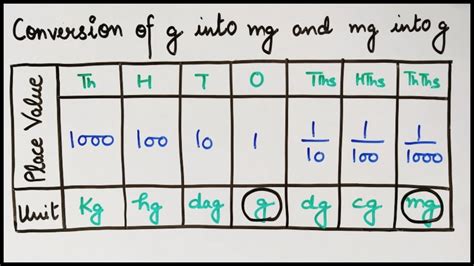How Many Grams Is 400 Mg
Kalali
Apr 01, 2025 · 4 min read

Table of Contents
How Many Grams is 400 mg? A Comprehensive Guide to Metric Conversions
Understanding unit conversions, especially within the metric system, is crucial in various fields, from cooking and medicine to science and engineering. A common question that arises is: how many grams is 400 mg? This seemingly simple query opens the door to a broader understanding of metric prefixes and their practical applications. This comprehensive guide will not only answer this question definitively but also equip you with the knowledge to confidently perform similar conversions.
Understanding the Metric System
The metric system, formally known as the International System of Units (SI), is a decimal system based on powers of 10. This makes conversions incredibly straightforward compared to systems like the imperial system (pounds, ounces, etc.). The fundamental unit of mass in the metric system is the gram (g). Other units of mass are derived from the gram using prefixes that indicate multiples or fractions of a gram.
Key Metric Prefixes
To understand how many grams are in 400 mg, we need to focus on the prefix "milli." Here's a table of common metric prefixes relevant to mass:
| Prefix | Symbol | Meaning |
|---|---|---|
| kilo | k | 1000 (10³) |
| hecto | h | 100 (10²) |
| deca | da | 10 (10¹) |
| milli | m | 0.001 (10⁻³) |
| centi | c | 0.01 (10⁻²) |
| deci | d | 0.1 (10⁻¹) |
Converting Milligrams (mg) to Grams (g)
The prefix "milli" (m) means one-thousandth (1/1000). Therefore, 1 gram (g) is equal to 1000 milligrams (mg). This fundamental relationship is the key to solving our problem.
To convert 400 mg to grams, we can use the following conversion factor:
1 g = 1000 mg
We can set up a simple proportion:
400 mg / x g = 1000 mg / 1 g
Solving for x:
x g = 400 mg * (1 g / 1000 mg)
x g = 0.4 g
Therefore, 400 mg is equal to 0.4 g.
Practical Applications of mg to g Conversions
Understanding this conversion is vital in many real-world scenarios:
1. Medicine and Pharmacology:
Dosage instructions for medications are often given in milligrams (mg), while larger quantities might be expressed in grams (g). Accurate conversion is critical for safe and effective medication administration. Misunderstanding this conversion could have serious consequences.
2. Cooking and Baking:
While grams are commonly used in baking recipes, some ingredients, particularly spices or flavorings, might be measured in smaller units like milligrams. Accurate conversions ensure consistent results.
3. Science and Research:
In scientific experiments, precise measurements are paramount. Converting between milligrams and grams is crucial for accurate data recording and analysis in various fields, such as chemistry, biology, and physics.
4. Engineering and Manufacturing:
Precision engineering and manufacturing often require extremely accurate measurements. Converting between milligrams and grams is necessary for quality control and ensuring components meet specified tolerances.
5. Nutrition and Dietary Supplements:
Nutritional information on food labels often includes the amount of various nutrients in milligrams. Converting to grams can help you compare nutritional values across different food products more effectively.
Beyond 400 mg: Mastering Metric Conversions
The method used to convert 400 mg to grams applies to any milligram-to-gram conversion. Simply multiply the number of milligrams by 0.001 to obtain the equivalent value in grams.
Here are a few more examples:
- 250 mg = 0.25 g (250 mg * 0.001 g/mg = 0.25 g)
- 1500 mg = 1.5 g (1500 mg * 0.001 g/mg = 1.5 g)
- 5000 mg = 5 g (5000 mg * 0.001 g/mg = 5 g)
Conversely, to convert grams to milligrams, you would multiply the number of grams by 1000.
- 0.75 g = 750 mg (0.75 g * 1000 mg/g = 750 mg)
- 2 g = 2000 mg (2 g * 1000 mg/g = 2000 mg)
- 0.05 g = 50 mg (0.05 g * 1000 mg/g = 50 mg)
Tips for Accurate Conversions
-
Use a calculator: For more complex conversions or when dealing with large numbers, using a calculator will minimize errors.
-
Double-check your work: Always verify your calculations to ensure accuracy, especially in situations where precision is critical.
-
Understand the context: Pay close attention to the units involved in the problem. Misinterpreting the units can lead to significant errors.
-
Practice regularly: The more you practice unit conversions, the more comfortable and confident you will become.
Conclusion: The Importance of Accurate Measurement
The seemingly simple conversion of 400 mg to 0.4 g underscores the importance of understanding metric units and their prefixes. Accurate conversions are essential across various disciplines, from everyday tasks to highly specialized fields. Mastering this skill will undoubtedly enhance your ability to work with data, solve problems, and make informed decisions in any context requiring precise measurements. By understanding the principles of metric conversion, you’re not just calculating a value; you’re building a foundation of knowledge applicable to countless situations. Remember to always double-check your work and to understand the context of your conversions. This attention to detail is vital for accuracy and precision in all your endeavors.
Latest Posts
Latest Posts
-
How Many Centimeters Is 23 Inches
Apr 02, 2025
-
How Many Gallons Is 10 Cups
Apr 02, 2025
-
What Is 62 Degrees Celsius In Fahrenheit
Apr 02, 2025
-
Is Usa In The Northern Hemisphere
Apr 02, 2025
-
How Many Glasses Is 32 Oz Of Water
Apr 02, 2025
Related Post
Thank you for visiting our website which covers about How Many Grams Is 400 Mg . We hope the information provided has been useful to you. Feel free to contact us if you have any questions or need further assistance. See you next time and don't miss to bookmark.
